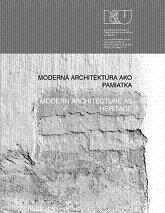THE MODERN POOL AS A NEW CIVIC SPACE
THE MODERN POOL AS A NEW CIVIC SPACE
Author(s): Hannah Lewi, Christine PhillipsSubject(s): Cultural Essay, Political Essay, Societal Essay
Published by: Historický ústav SAV, v. v. i.
Keywords: public; swimming; pool; Britain; Australia; social; modern; design; architect; innovative
Summary/Abstract: This paper examines the modern swimming pools as a new kind of civic, public building type that developed between the 1930s and 1960s. Public pools were widely built in most developed and developing countries during this period. This discussion distils only five case studies of significant modern, outdoor public pools – 3 in Australia and 2 in Europe – that have been researched through detailed fieldwork, archival analysis and interviews with architects and users. The impetus for the provision of public amenities for recreation, sport and leisure in urban contexts grew out of nineteenth century reform ideals affecting city planning and architecture, and was further consolidated through the agendas of modernist urban charters such as CIAM and other governmental initiatives. We demonstrate that the public swimming pool is a particularly potent indicator of modernity. As a type it reflects modern attitudes towards a range of attributes including: accessible and classless recreation in line with socialist ideologies and concerns for the welfare of the poor; exposure to natural elements inspired by the natural hygiene movement; the changing politics of the collective and individual body along with shifts in attitude towards gender and social behaviours conducted in public spaces. Public pools presented architectural challenges and opportunities to modern architects through their structural design, planning and environmental servicing. Many innovative responses were realised worldwide, with leading examples coming from Australia due to its national investment in swimming as a sport and the advantages of climate. Our research, which is drawn from two concurrent larger projects on modern community buildings and public pools, looks at case studies selected from key periods of pool construction spanning the 1930s to 1960s. First, we examine the Jubilee Pool in Penzance, England, designed by F. Latham (1933), and the North Sydney Olympic Pool, Australia, designed by Rudder and Grout (1936). We argue that these pools express, through their modern functionalist language, the aspirations of this decade to create a new kind of civic forum. The second group of cases are drawn from a later wave of more architecturally innovative and expressive pools of the 1960s and include the Centenary Pool in Brisbane, Australia, designed by James Birrell, (1959); the Piscina de Leça da Palmeira, Matosinhos, Portugal, designed by Alvaro Siza (1961-68); and the Holt Memorial Pool, Melbourne, Australia, designed by Jackson and Borland (1969). In these pools we see a shift towards more relaxed, civic spaces, and a desire to embrace family-focused recreation. This social freedom is translated into the architecture of these pools which, in different ways, express a newfound naturalism and organic looseness through planning, form and textured materials that is indicative of larger international trends in modernism of the period. We consider not only the architectural design
Journal: Architektúra & Urbanizmus
- Issue Year: 44/2010
- Issue No: 3-4
- Page Range: 262-273
- Page Count: 12
- Language: English

